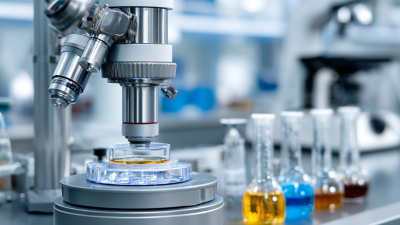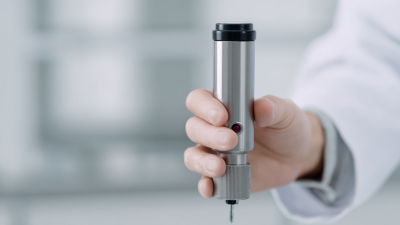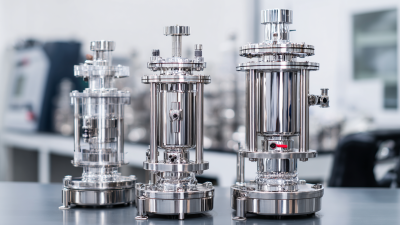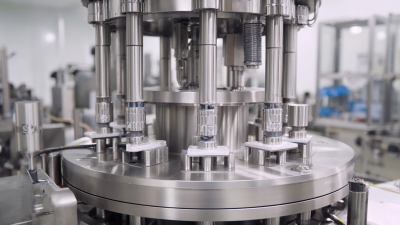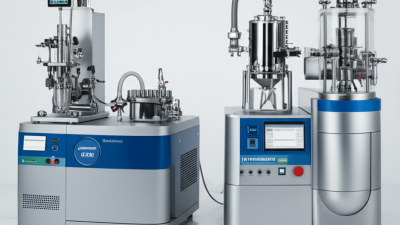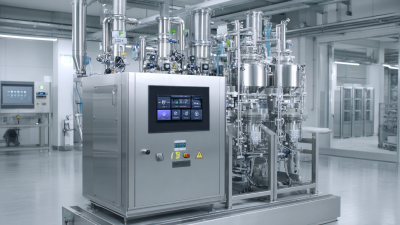Over the past few years, the microfluidics industry has really taken off. Thanks to leaps in technology and the growing need for precise control of fluids in various fields—like pharma, biotech, and materials science—things are moving fast. I mean, a report from MarketsandMarkets predicts the global microfluidics market will hit about about $23.4 billion by 2026, with an average annual growth rate of around 20%. If you're looking to jump into this exciting market, it's super important to optimize your microfluidizer for peak performance and cost efficiency.
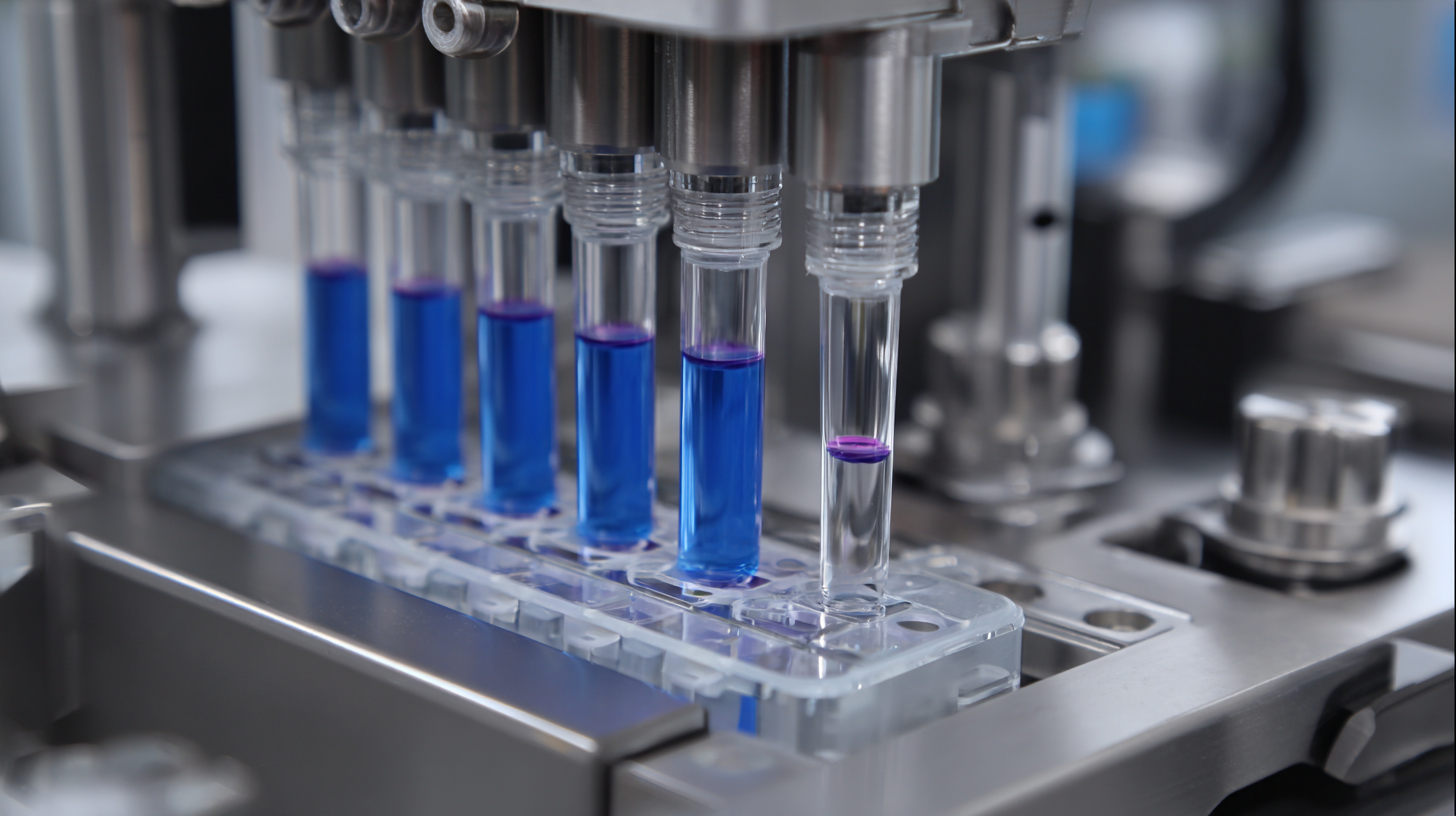
CAS PETER (HANGZHOU) NANOTECHNOLOGY CO., LTD is actually a pretty big name here, especially when it comes to high-pressure homogenizers and microfluidizers. They’re dedicated to helping different industries meet their processing needs. Getting a good handle on the factors that can boost your microfluidizer’s performance can really make a difference—whether it’s improving your results or saving on operational costs. All in all, strategic tweaking and optimization are key as this field continues to evolve so rapidly, especially with all the advancements in nanotech.
When you're picking out a microfluidizer for your microfluidics project, there are a bunch of factors you really should keep in mind. These little details can make a big difference when it comes to how well it works and how much it costs you. Lately, with all the new advancements in formulation tech — especially for making nanoemulsions for oral delivery — it’s super important to choose the right method. Microfluidics, for example, can give you much better control over droplet size and how evenly everything’s spread out, compared to ultrasonication. That kind of precision can lead to more stable formulations, which is a big plus. From what I’ve seen in studies, getting your droplet size under 200 nanometers can really boost bioavailability — which, in turn, is pretty crucial when you're developing a product.
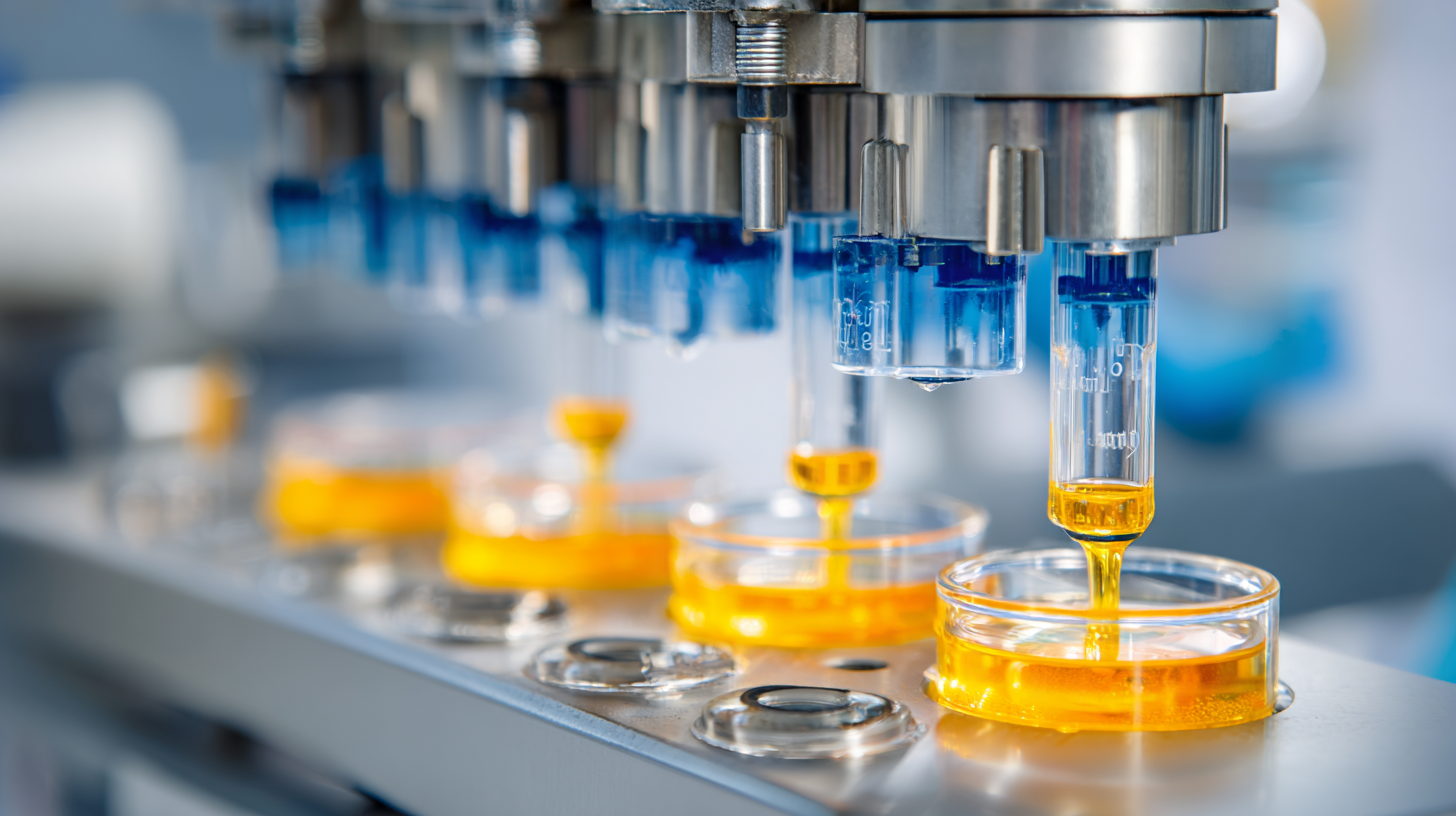
Here’s a tip: think about the specific qualities your emulsion needs to have. A microfluidizer can help you get those tight size distributions, which really matter for stability. And if you go for a modular setup, it makes it easier to tune everything based on how much you need to process, without blowing your budget on operation costs.
Oh, and don’t forget to check whether the throughput of the system matches your production goals. If it scales up smoothly, it can save you a lot of time and cash over the long haul. Looking at industry reports, it’s pretty clear that investing in this kind of advanced microfluidics tech can pay off — less waste, better quality, and ultimately, happier customers.
When you're trying to get the most out of your Microfluidizer in microfluidics, knowing what to look for — those key performance indicators, or KPIs — is super important. One of the biggies is droplet size distribution. That’s basically how uniform your droplets are, and it really affects the quality of your emulsions. I came across this report from Research and Markets that says if you can get those droplets down to less than 10 micrometers on average, you’ll see a real boost in things like product stability and how well the active ingredients are absorbed — which is especially crucial in pharma stuff. Keeping an eye on this measurement regularly can really give you a good sense of how your process is doing and where you might need to tweak things.
Getting the most out of your microfluidics microfluidizer isn’t just about buying the latest equipment — it’s a bit of a balancing act. Start by taking a good look at all the costs involved: the purchase price, ongoing maintenance, and how much it costs to keep things running day-to-day. Don’t forget to think about the long-term, too — sometimes splurging on a higher-quality machine can actually save you money down the road because it breaks down less often and needs fewer repairs. That kind of reliability can really boost your overall return on investment.
Then, it’s time to think about what you’re actually getting from your microfluidizer. How well does it boost your product yields? Does it help keep your results consistent? If it’s good at controlling particle size and improving quality, you’re more likely to keep your customers happy and coming back for more. Also, don’t overlook how much time it saves you — faster processing means you can handle more projects and keep your workflow smooth. When you weigh the costs against these real benefits, it becomes clear how your microfluidizer can be a big help in making your business more profitable for the long haul.
| Parameter | Optimal Value | Impact on Efficiency (%) | Cost Savings ($) | Return on Investment (%) |
|---|---|---|---|---|
| Processing Pressure (psi) | 1500 | 25 | 2000 | 15 |
| Flow Rate (mL/min) | 10 | 30 | 1500 | 12 |
| Temperature (°C) | 25 | 20 | 1000 | 10 |
| Shear Rate (1/s) | 5000 | 35 | 2500 | 18 |
| Material Cost ($/kg) | 40 | 15 | 2000 | 25 |
When you're working with microfluidizers, it's really important to strike the right balance between shear stress and fluid performance to get the best results. Pushing the shear rates too high can cause issues like protein denaturation or unwanted aggregation — nobody wants that! To avoid these problems, it’s worth considering some smart design tweaks. For instance, using a multi-stage setup can help spread out the shear forces more evenly, giving you better control over the flow while keeping delicate materials intact.
A few tips to help cut down shear stress include tweaking your flow rates and trying out pulsation techniques — sometimes a little rhythm can make a big difference. Also, keeping an eye on inlet pressure and temperature can really help minimize shear impacts during processing. Don’t forget, experimenting with different nozzle shapes or configurations might also help you find that sweet spot for optimal mixing without messing with your fluid’s properties.
And here’s a pro tip: make sure to regularly calibrate your equipment and track how everything is performing. This way, you can catch any inefficiencies early on before they turn into bigger problems. By applying these strategies, you’ll not only make your microfluidizer work more smoothly but also save some serious costs down the line. Focusing on fluid performance and keeping shear stress in check will help your microfluidics projects stay on point with reliable, effective results.
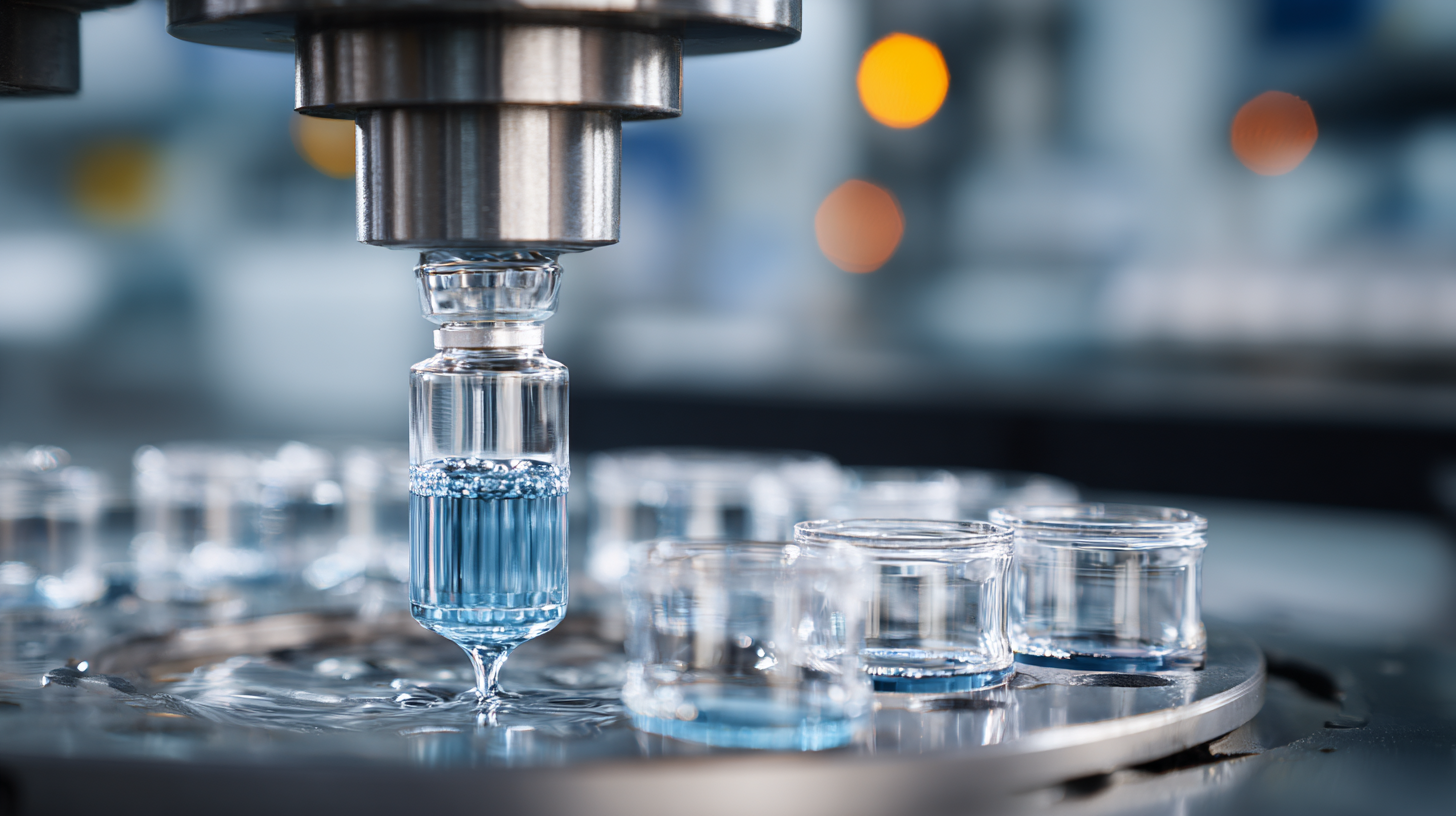 Taking care of your microfluidics microfluidizer really pays off, not just in keeping it running smoothly but also in prolonging its life. Doing regular upkeep isn’t just about efficiency – it can save you a good chunk of money in the long run too. A good place to start is by routinely checking out the main parts like seals, valves, and pumps—it's best to catch any wear and tear early before things get worse. After each use, make sure to give the system a thorough clean; it’s amazing how much gunk can build up and slow everything down or mess with your product quality. Using the right cleaning solutions is also key to keeping those tiny channels in tip-top shape.
Taking care of your microfluidics microfluidizer really pays off, not just in keeping it running smoothly but also in prolonging its life. Doing regular upkeep isn’t just about efficiency – it can save you a good chunk of money in the long run too. A good place to start is by routinely checking out the main parts like seals, valves, and pumps—it's best to catch any wear and tear early before things get worse. After each use, make sure to give the system a thorough clean; it’s amazing how much gunk can build up and slow everything down or mess with your product quality. Using the right cleaning solutions is also key to keeping those tiny channels in tip-top shape.
And don’t forget about calibration! Regularly checking and tweaking your microfluidizer helps keep results consistent and prevents unexpected breakdowns. It’s also a good idea to keep a log of all maintenance work—it makes troubleshooting easier and helps you plan ahead for future needs. So, if you stick to these simple tips, you’ll get the most out of your equipment, avoid frustrating downtime, and save on repair costs in the long run. Trust me, a little bit of effort goes a long way!
Basically, optimizing microfluidics using data analytics has become pretty much essential if companies want to ramp up production and cut down on costs. By using smart data analysis tools—whether locally or in the cloud—manufacturers can pretty much spot and fix process hiccups before they become big problems. For example, some companies have boosted their defect detection accuracy from a mere 19% all the way up to a remarkable 95%. That kind of precision makes a big difference because it lets you fine-tune the microfluidizer's settings on the fly, keeping things running smoothly and wasting less material.
On top of that, tools like process control systems and chip inspection tech are key for keeping an eye on the whole microfluidics setup. When you combine these with data analytics, it turns into a continuous cycle of improvement—that’s how you really push production figures up. Industry stats show that businesses embracing this data-driven approach see productivity jump by around 30%. So, honestly, if you’re in the microfluidics game, investing in data analytics isn’t just a good idea anymore — it’s pretty much a necessity if you want to stay competitive in this fast-changing field.
: Key factors include the specific characteristics of the emulsion required, throughput capacity, the potential for modular design, and the efficiency in achieving narrow droplet size distributions.
Achieving a mean droplet size below 200 nm significantly enhances bioavailability, leading to more stable formulations and potentially better product performance in oral delivery applications.
It helps assess direct costs, analyze the benefits of product yields and consistency, and evaluate long-term savings from higher quality and efficiency, all contributing to a profitable investment.
The throughput capacity of the microfluidizer should be evaluated against production needs to ensure it can scale efficiently, saving time and resources.
Data analytics allows manufacturers to identify inefficiencies, optimize operating parameters in real time, and implement continuous improvement cycles, leading to increased productivity.
Companies have improved defect recognition accuracy from 19% to 95% using real-time defect data analysis, facilitating proactive adjustments in their processes.
Organizations that adopt data-driven approaches typically experience an average productivity increase of 30%.
Higher quality equipment can result in lower long-term costs due to reduced downtime and maintenance needs, which positively impacts overall ROI.
A microfluidizer optimized for particle size distribution enhances product quality, which can lead to increased customer satisfaction and retention.
Implementing a modular design allows for optimization to meet varying throughput requirements, ultimately reducing operational costs.
If you're really looking to get the most out of your microfluidic setup and save some cash along the way, it all starts with choosing the right Microfluidics Microfluidizer. I mean, understanding the key performance indicators is pretty much essential—they directly impact how efficient your equipment is. Taking the time to do a solid cost-benefit analysis can really open your eyes to where you might be able to optimize and see better returns on your investment.
On top of that, there are some clever techniques out there to reduce shear stress while still keeping your fluid performance top-notch. That can seriously improve your product quality. Plus, keeping up with good maintenance habits will help your equipment stay in good shape longer. And don’t forget—using data analytics to tweak your operating settings can take your production efficiency to the next level.
Here at CAS PETER (HANGZHOU) NANOTECHNOLOGY CO., LTD, we’re all about providing innovative nanotech solutions tailored to the needs of various industries. Our goal? Helping you squeeze the most out of your Microfluidics Microfluidizer and making your processes smoother and more efficient.
